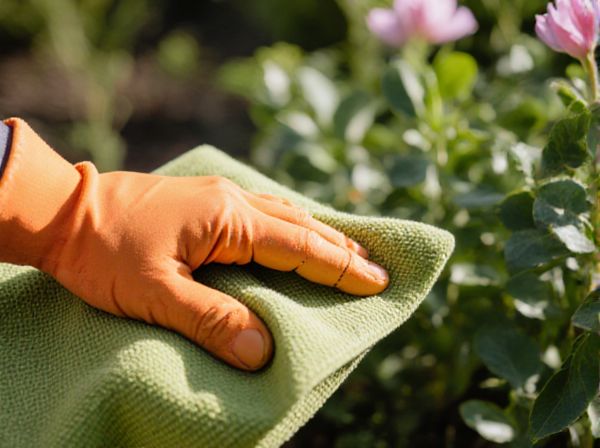
Shade Cloth vs Polycarbonate Panels Illustration
Shade cloth offers breathable protection from sunlight, reducing temperature without completely blocking airflow, making it ideal for delicate plants requiring filtered light. Polycarbonate panels provide a durable, rigid barrier that maximizes insulation and UV filtering while allowing consistent light transmission, suitable for year-round greenhouse structures. Choosing between shade cloth and polycarbonate panels depends on specific plant needs, climate conditions, and the desired balance between ventilation and insulation.
Table of Comparison
| Feature | Shade Cloth | Polycarbonate Panels |
|---|---|---|
| Material | Woven fabric | Rigid plastic (polycarbonate) |
| Light Control | Filters sunlight, reduces intensity | Diffuses light, blocks UV rays |
| Durability | 3-5 years, prone to tearing | 10+ years, impact and weather resistant |
| Installation | Easy, lightweight | Requires framing, heavier |
| Cost | Low to moderate | Higher upfront investment |
| Thermal Insulation | Minimal | Excellent, reduces heat loss |
| Maintenance | Replace when worn | Clean with mild soap, long-lasting |
| Best Use | Temporary shading, cost-effective | Permanent greenhouse roofing, energy efficient |
Introduction to Greenhouse Shading Solutions
Shade cloth offers cost-effective, breathable protection by filtering sunlight and reducing heat buildup in greenhouses, ideal for temperature-sensitive plants. Polycarbonate panels provide durable, rigid shading with superior UV resistance and insulation, enhancing structural integrity and year-round climate control. Both materials optimize plant growth by managing light intensity and thermal conditions, tailored to specific horticultural needs.
What is Shade Cloth?
Shade cloth is a woven or knitted fabric designed to reduce sunlight exposure and control temperature inside greenhouses by providing varying levels of shade, typically ranging from 30% to 90%. Made from high-density polyethylene (HDPE), shade cloth offers UV protection, durability, and airflow, which helps prevent overheating and promotes healthy plant growth. Unlike rigid polycarbonate panels, shade cloth is flexible, lightweight, and can be easily installed or removed for seasonal light adjustments.
What are Polycarbonate Panels?
Polycarbonate panels are durable, lightweight glazing materials made from thermoplastic polymers known for their high impact resistance and excellent light transmission. These panels provide superior insulation compared to shade cloth, reducing heat loss while allowing ample natural light to support plant growth in greenhouses. Their UV-resistant properties enhance longevity, making polycarbonate panels a preferred choice for long-term greenhouse construction and climate control.
Light Transmission: Shade Cloth vs Polycarbonate
Shade cloth allows approximately 30% to 70% light transmission depending on its density, providing filtered sunlight ideal for sensitive plants. Polycarbonate panels transmit between 80% to 90% of light, offering high clarity and strong UV protection while maintaining structural durability. Selecting shade cloth or polycarbonate depends on the specific light requirements and heat management needs of the greenhouse crops.
Temperature Control Comparison
Shade cloth effectively reduces solar radiation, lowering greenhouse temperatures by up to 30%, which helps prevent heat stress in plants. Polycarbonate panels provide superior insulation with U-values as low as 2.9 W/m2K, maintaining more stable internal temperatures by minimizing heat loss and gain. Both materials contribute to temperature control, but polycarbonate panels offer greater thermal regulation for year-round climate management.
Durability and Longevity
Shade cloth offers flexibility and UV protection but typically degrades within 3 to 5 years due to exposure to harsh weather conditions. Polycarbonate panels provide superior durability with resistance to impact, UV rays, and temperature fluctuations, often lasting 10 to 15 years or more. The longevity of polycarbonate panels makes them a cost-effective investment for greenhouse structures requiring long-term shading solutions.
Installation and Maintenance
Shade cloth installation involves simple mounting on frames or support structures using clips or grommets, allowing easy customization and removal for seasonal changes. Maintenance requires regular cleaning with water to prevent dust and debris buildup, ensuring optimal light filtration without degradation. Polycarbonate panels demand precise cutting and secure fastening with screws and sealants to maintain structural integrity and weatherproofing, while maintenance includes inspecting for cracks or discoloration and periodic washing to extend panel lifespan.
Cost Analysis: Shade Cloth vs Polycarbonate Panels
Shade cloth is generally more cost-effective than polycarbonate panels, offering lower initial investment and easier installation expenses. Polycarbonate panels tend to have higher upfront costs but provide enhanced durability, UV protection, and longer lifespan, which can reduce replacement frequency over time. Budget considerations should weigh the immediate affordability of shade cloth against the long-term value and maintenance savings of polycarbonate panels for greenhouse applications.
Suitability for Different Plant Types
Shade cloth offers breathable, diffused light ideal for delicate, shade-loving plants such as lettuce, herbs, and orchids that require moderate temperature control and protection from intense sunlight. Polycarbonate panels provide durable, rigid protection with high light transmission and insulation, making them suitable for heat-tolerant plants like tomatoes, peppers, and tropical varieties that benefit from consistent warmth and protection against harsh weather. Choosing between shade cloth and polycarbonate panels depends on the specific light, temperature, and humidity needs of the plant species being cultivated.
Choosing the Right Option for Your Greenhouse
Shade cloth offers adjustable light diffusion and improved ventilation, making it ideal for greenhouses needing temperature control and plant protection from intense sunlight. Polycarbonate panels provide superior durability, UV resistance, and insulation, ensuring year-round climate stability and structural strength. Selecting between them depends on the specific greenhouse requirements for light control, thermal insulation, and weather resistance.
Shade Cloth vs Polycarbonate Panels Infographic

 gardendif.com
gardendif.com